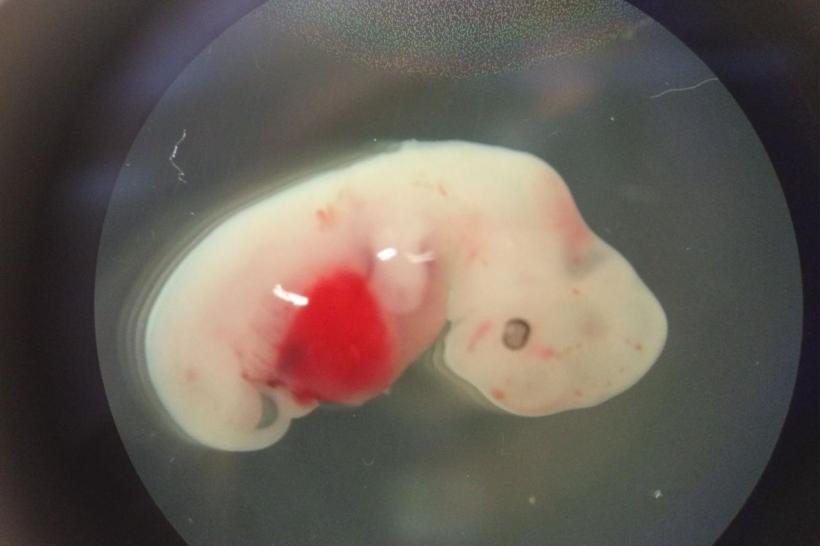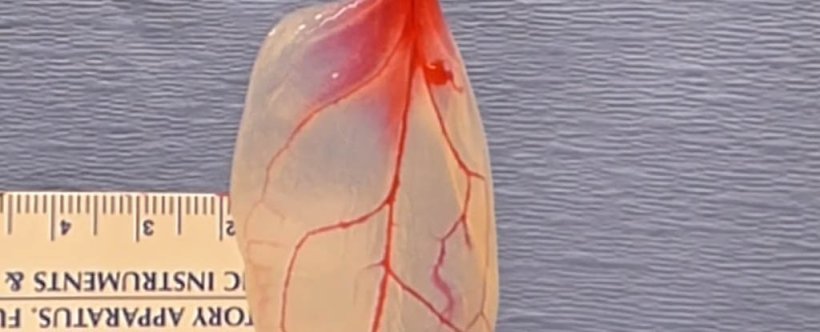Pigs with human brain tissue and multiple human organs to be grown and eventually harvested. These are what the pigoons are meant to be. The concept of it may seem far-fetched to some, but here we are in 2017, an era where we take a few more steps into the MadAddam universe. Organs and tissue donors are hard to find and there is a long list of people who need them. Scientists have found oddly familiar answers.
Chimeras are no longer mere fantasy and are being studied closely in order to help humanity. In fact, the Maryland University of Medicine are studying and experimenting with ways to make pig organs usable for humans. They have already managed to filter human blood through pig lungs. Now, they are injecting pig embryos with human cells and put the embryos into grown female pigs to carry for a few weeks before being removed and studied some more.

From animals to plants, no living being is spared from human testing. Now, spinach is found to be able to build or be used as human heart tissue. This is done by growing human cells on the leaves. The leaf’s veins can replicate human veins. Studies are ongoing and the scientists feel that other types of leaves can be turned into tissue for other parts of the human body. The test they conducted transformed the spinach leaf into a miniature human heart. They plan on improving their techniques.

Human leaves and pigoons may not be so for off into the future. Of course, there is much controversy in what is being done in these experiments, but the tests have already been done. Our science is becoming eerily similar to that of Atwood’s MadAddam universe. Well, what do you think? Is science going in the right direction? Or are we tampering with things beyond our understanding? If we continue down this path, where exactly will we stop?
Works Cited:
Atwood, Margaret. The Year of the Flood. Toronto: Vintage Canada, 2010. Print.
Blakemore, Erin. “Human-Pig Hybrid Created In The Lab—Here Are The Facts”. News.nationalgeographic.com. N.p., 2017. Web. 17 Apr. 2017.
http://news.nationalgeographic.com/2017/01/human-pig-hybrid-embryo-chimera-organs-health-science/
Chambers, Delaney. “Spinach Leaf Transformed Into Beating Human Heart Tissue”. News.nationalgeographic.com. N.p., 2017. Web. 17 Apr. 2017.
http://news.nationalgeographic.com/2017/03/human-heart-spinach-leaf-medicine-science/

April 17, 2017 at 9:59 am
Technology is moving real fast!
Had we told our ancestors that in the future we would be flying in the sky just like birds, they would have called us crazy. Had you told me ten years ago that in the future we would be transplanting animal organs into humans and using leaves to repair heart disease, I would have called you crazy. But now nothing surprises me. I even believe that one day we will be able to upload our consciousness into computer in order to live forever. I only hope that these new lifesaving technologies will be available to everyone and not only be reserved for the uber rich.
LikeLike
April 24, 2017 at 2:15 am
Wow I really wasn’t aware that plants could be transformed into human organs! The thought never even crossed my mind, but I think it’s really cool and that it would be a great substitute for animal organs so that animals don’t have to suffer as much. It looks like the science that Margaret Atwood is portraying might be closer to real life than I thought. Great blog!
LikeLike
April 29, 2017 at 3:56 pm
Wow! I really had no idea we could use plants to replace human organs! That is definitely on a whole other level.
As I was reading all three books in the series, I was surprised when reading about the technology described by Atwood, only to find out later on that most of the things she wrote about are already being done today or are soon to be achieved! It is definitely fascinating to see what science can accomplish, but I will always question whether or not these breakthroughs will be beneficial for everyone and not just a portion of society. I just hope that whatever scientists manage to achieve won’t end up hurting more than helping. After all, there are always things that can go very wrong. This makes me wonder about how are we supposed to know when is it too much? Hopefully, we won’t get to the point where science goes so far (in a negative way) that it is impossible to go back.
Great post! Definitely got me thinking.
LikeLike
April 30, 2017 at 10:37 pm
That’s amazing! I really do think that providing alternatives to organs is a good idea. There aren’t enough organ donors out there, so it would be a good solution if someone needed a heart quickly. It seems slightly impossible to imagine being able to transform plants into organs. I don’t believe that we won’t get there one day, it just seems a little far-fetched. But then again, people said that about technologies that were being developed years ago that are successful today!
LikeLike
May 1, 2017 at 2:47 pm
I think when Atwood was writing her book she decided to use technologies that were being developed and not just inventing her own as she was trying to make it more realistic therefore making the waterless flood a bit scarier for the reader. That being said, I am not scared of the advancement that are currently being made as I believe that it will help save the lives of millions. But, as you mentioned, it is hard to really draw the line on where to stop and when it is too far. Saving the lives of sick people is one think but messing up with genetics for cosmetics purposes is another.
LikeLike